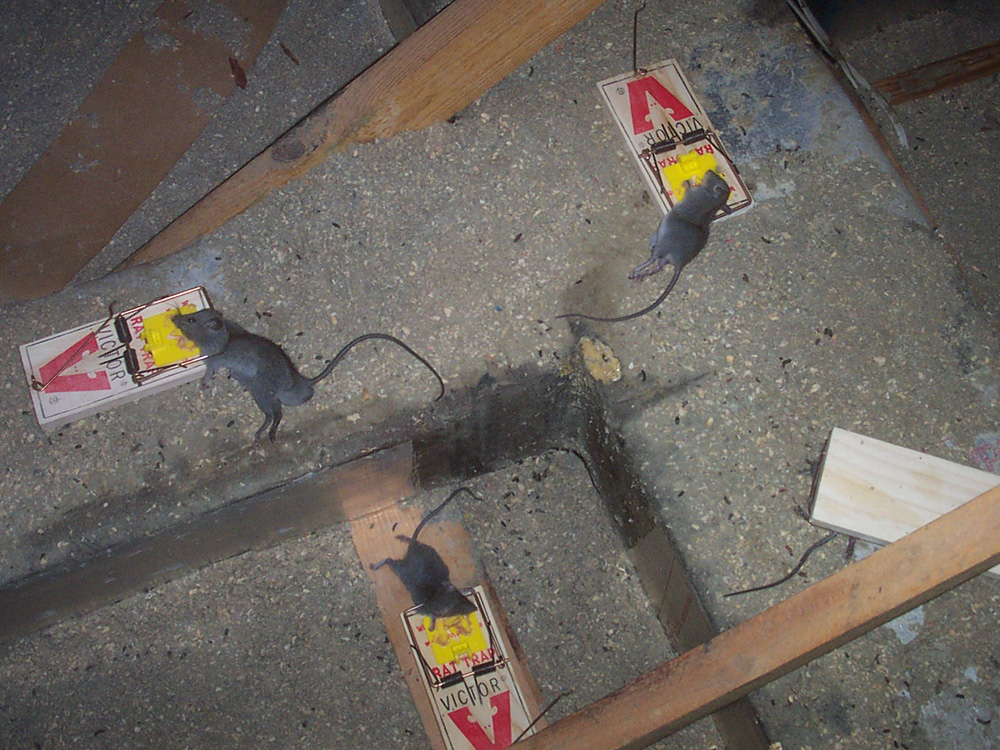Context
In order to focus on problem
definition, one needs to be able to avoid solving the problem to quickly
(Bardwell, 1991). Ironically or perhaps consequently, the issue of solving the
problem of pests too quickly in Christchurch post earthquake was most likely
not to have been an issue because there were many things that were more
important to the people of Canterbury than instantly worrying about pests. Speaking
for about 100 percent of the population within the Canterbury Region I would
say people were focussed on thinking of friends and family, ensuring their
homes or businesses were safe, the fear of continuing aftershocks and cleaning
up the masses of mess that were left post quake. In the appropriate time after the
quakes, there should however be some thought put to the problems of pests in
the city increasing as a result of the earth being shaken awake and its
subsequent effects.
Background
An infestation of rodents and
feral cats in quake-ravaged areas of Christchurch is a growing problem
post-earthquake and according
to some it is inevitable and there is little authorities can do to prevent
it.
The ground in Christchurch and areas
of the wider Canterbury Region has been given a good shake up and consequently
many aspects of the natural or existing environment have been severely altered.
The buildings that many pests live in have also been shaken and many destroyed.
Pests that naturally live and nest in the ground or live in buildings with us,
such as rats, mice or feral cats would have likely to have also been shaken
from their existent habitat. Rats, mice and cats – both wild and those that ran
away or were abandoned as a result of the quakes, are likely to become more
visible in many of the vacant houses throughout the eastern suburbs and many
vacant areas and damaged buildings within the CBD. The central city and some
suburbs near the Avon River had always had rodent issues, but
the quake forcing people from their homes and preventing control measures being
applied has exacerbate the problem.
It seems likely that rats (Norway
and roof rats) will have been shaken out of their normal residences and will have
scattered, seeking new places to find food sources and shelter. The destruction
of buildings would have resulted in the breaking of food storage containers and
facilities allowing access to the food for rodents and other pests to thrive on.
This would have potentially been a short-term problem that may have turned into
a long term one. Etc, if vermin found this food resource early on, they would
have likely resided there and bred in this location.
Royce
Delaney said that rats needed only 21 days to breed and produce up to
eight babies each birth, while mice only needed 19 days and could produce up to
12 babies. Maurice David, from pest-control company Rentokil, said staff was
struggling to keep up with requests for help from Christchurch businesses and
homeowners troubled by rodents. For every mouse or rat people saw on their
properties there were probably 10 others because they "breed like nobody's
business", he said.
Figures released by the
Christchurch City Council's environmental health team show that the number of complaints
about vermin nearly tripled. In the herald, council
inspections and enforcement unit manager Gary Lennan said complaints about
vermin were up because a combination of a warm autumn and the quake damage to
burrows and riverbanks. The absence of people and vehicles in some areas also meant
there were fewer threats to vermin, which allowed them to exist in large
numbers.
Problem
Definition
As stated in at the start of this blog
post the problem definition phase probably didn’t face the barrier of being rushed
and incorrectly defined due to more important matters and therefore the pest
problem and its characteristics may have been produced over time as they have
been recognised. However to solve the problem, the problem does need to be
correctly defined, because how the issue is defined will reflect ones understanding
of it and allow the problem solvers to examine a broad range of alternatives
and solutions (Bardwell, 1991).
Geographical
Boundaries - Complaints have not been confined to any one area; a general
increase across all areas of the city has been observed.
Health
Issues - Rodents can be transmitters of disease and during the time of
disasters disease is one of the major threats. With broken sewers and water
systems there comes a risk of direct contamination of water supplies from
sewers, but also of rats that had been living in sewers carrying disease to new
areas.
Breeding
– If left long enough the breeding of rats and mice would become a
major problem. The same theory will apply to cats in the suburbs, where they
would become a problem if they were producing wild kittens.
Encouraging
Habitat - Rodents are attracted to empty buildings. Delaney states
that it is not so much the rubbish that is the problem. The situation has
changed, houses are usually full of people but now there are a large number
that are vacant. This attracts rats and mice into new areas where they will
move under houses and no one is there to recognise or maintain any controls
that once were in place.
IEM Solutions
Note the solution should consider
the short and long term objectives (Cairns & Crawford, 1991) for it to be
an IEM approach and for it also to successively manage the problem both now and
throughout the recovery phase of Christchurch and then into its bright future.
A pest control agency or programme shall there for be set up to administer the ongoing
control of pests within Christchurch until they are back to normal (baseline) levels.
However, as mentioned earlier an
infestation of rodents and feral cats in quake ravaged areas of Christchurch according
to some is inevitable and is has been said that authorities can do
little to prevent it. Although the eradication of pests may not occur in full,
there can still be a reduction in the number of rodents and feral cats so that
the problem can be better managed and kept in a state where it will not cause
issues to public health. The process of reducing the levels of these pests must
be strategic, and the key issues in the problem definition section must be
selectively targeted, taking into account any constraints that exist (Born and
Sonzogni, 1995). These constraints would have included the short timing of
breeding, the expertise available at the time, and the restrictions of personal
having entry to cordoned off or unsafe areas for the purposes of pest
management.
Recommended Protocol for an IEM Approach: (adopted from Cairns &
Crawford 1991)
Step 1:
·
Identify the geographic boundaries – (the issue has stated it is located
in more than one specific area, so how far does the problem really extend?)
·
Identify the history and present condition – (the history of vermin
issues has been stated in Christchurch, however it is doubtful the extent of
the present condition of the problem is known therefore this should be properly
monitored to allow experts to know how to approach the problem)
Step 2:
·
Identify the organisations than can be involved to integrate to work on
the reduction of the pest problem
·
Identify all the potential impacts within and outside the management
area (I have mentioned the impacts on health, water and the impacts of the
breeding rates, although there will be many more)
Step 3:
·
Education – inform residents in the Canterbury Region of the extent of
the problem and the ways in which the general public can help to ensure the
reduction of pests occurs. This essentially will create an approach that is
both top down and bottom up!!
Step 4:
·
Establish a central organisation that operates under local government if
necessary that oversees the operation which would include establishing quality
control conditions to ensure that the pests are being dealt with correctly and
there are no risks to health or the natural ecosystems in the instances where
hazardous products are used for eradication
Step 5:
·
Implement a monitoring program to ensure that a change away from the
base line data for pest numbers is occurring i.e the numbers of rodents are successfully
being reduced through the processes that have been implemented. A review or
monitoring process is essential as without it the success of the program will
not be know and this may result in failure to commit in the future if results
are not visible.
Relevant Barriers to using IEM for Pest Reduction:
- Using an IEM approach takes time, this has two consequences in relation
to solving the post quake pest issues in Christchurch. Firstly, time is not on
the regulators side due to the rapid breading of rodents, therefore the system
for managing them would need to be established in an orderly fashion for the
problem to be manageable. The second is time involves money.
- For the reduction of pests to be successful, then this may require
community involvement to be active on the ground in terms of laying bait and
traps around their own properties. This may be seen as an additional cost to
the landowner, some may see it not as their responsibility and a change in lifestyle
that would be strongly resisted by some. This may include the, what has
prosperity done for me attitude
- Reactions to the problem may only occur if the problem becomes a health
crisis.
References:
Bardwell, L.
(1991). Problem-Framing: A perspective on environmental problem-solving. Environmental
Management, 15(5), 603-612.
Born, S. M.,
& Sonzongni, W. C. (1995). Integrated Environmental Management:
Strengthening the conceptualization. Environmental Management, 19(2), 167-181.
Cairns, J.,
& Crawford, T. (1991). The Need for Intergrated Environmental Systems
Management: in: Cairns, J. Jr & Crawford, T.V. (eds.). Integrated
Environmental Management. Chelsea, Michigan: Lewis Publishers.








